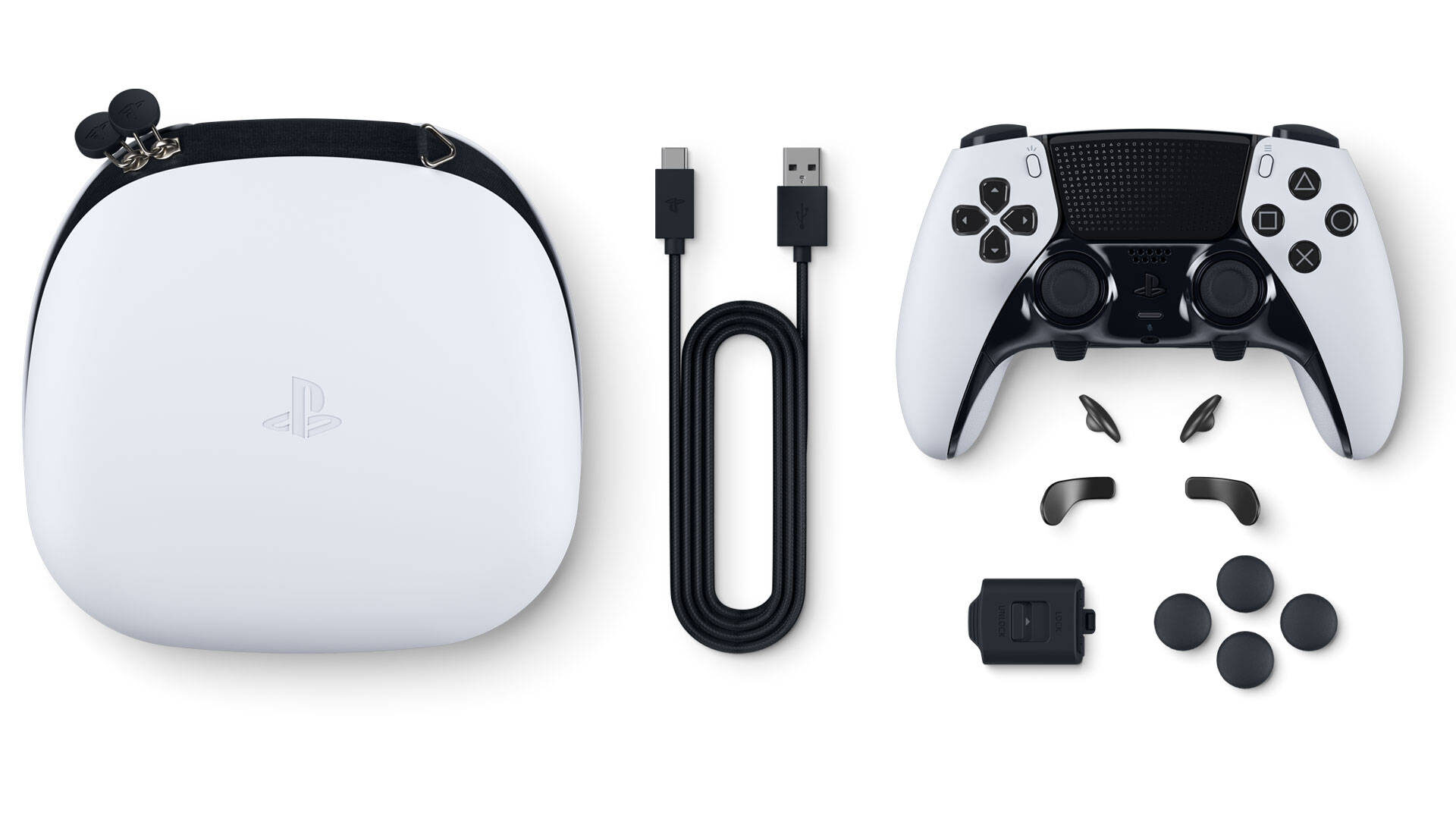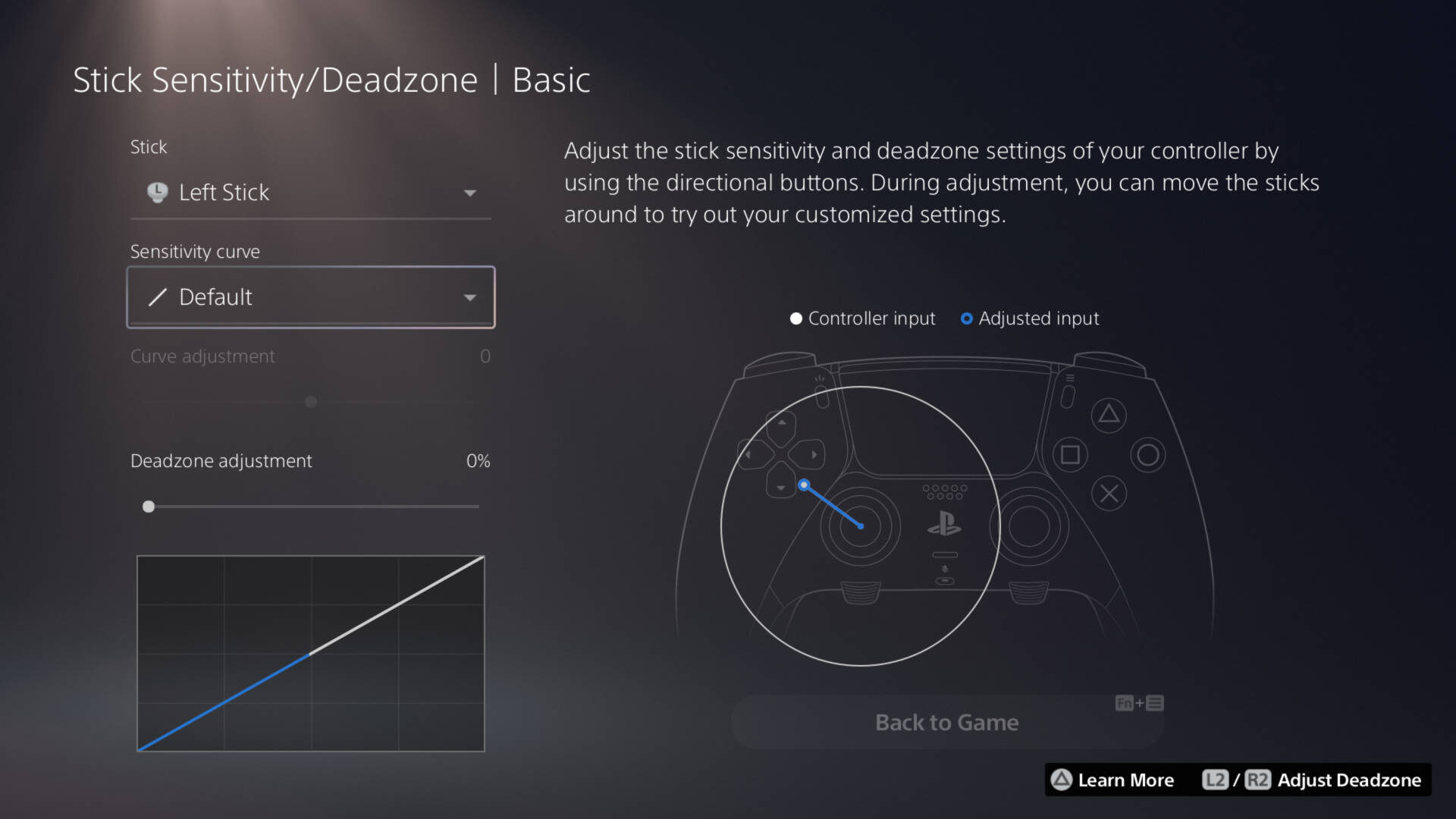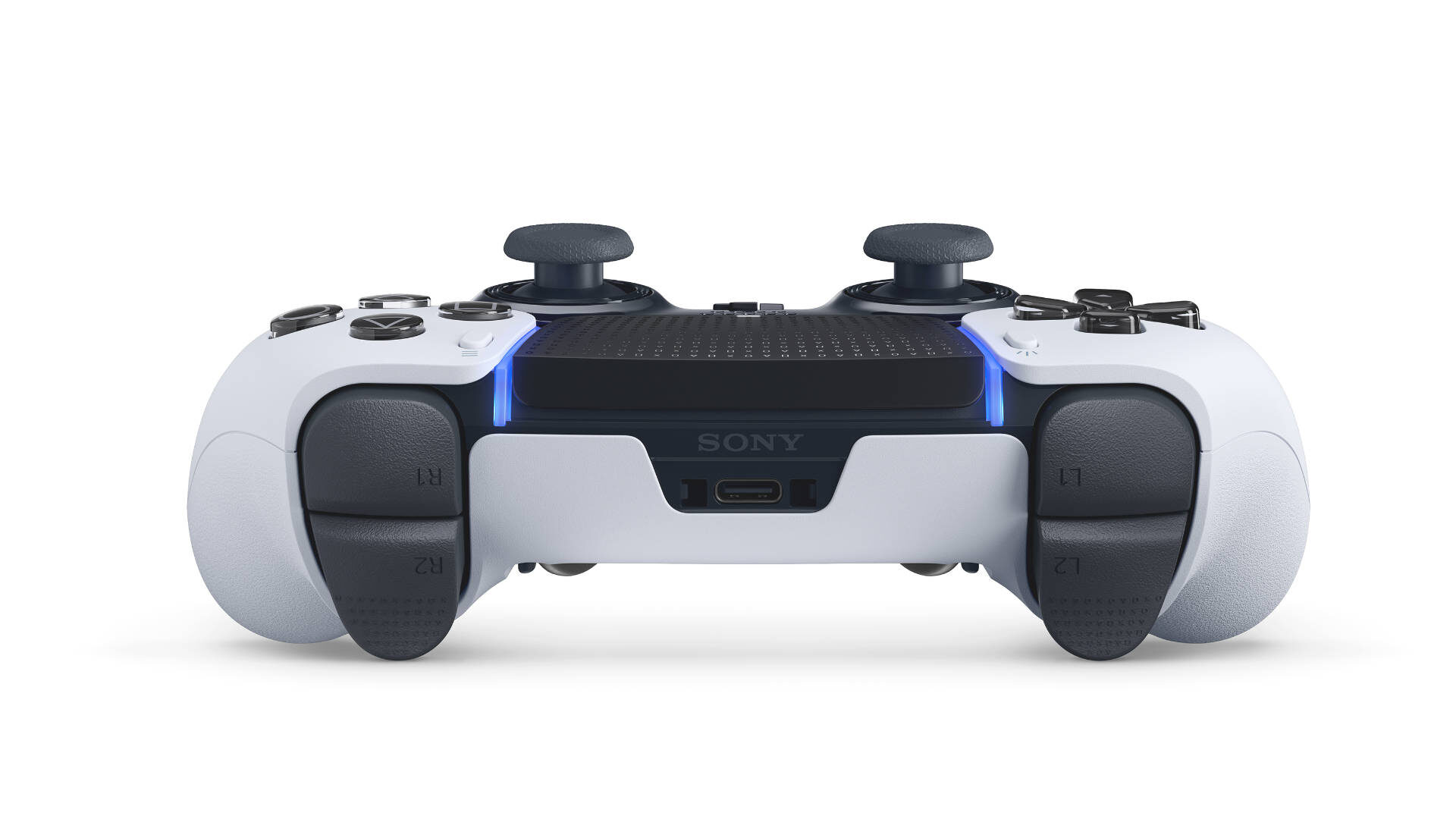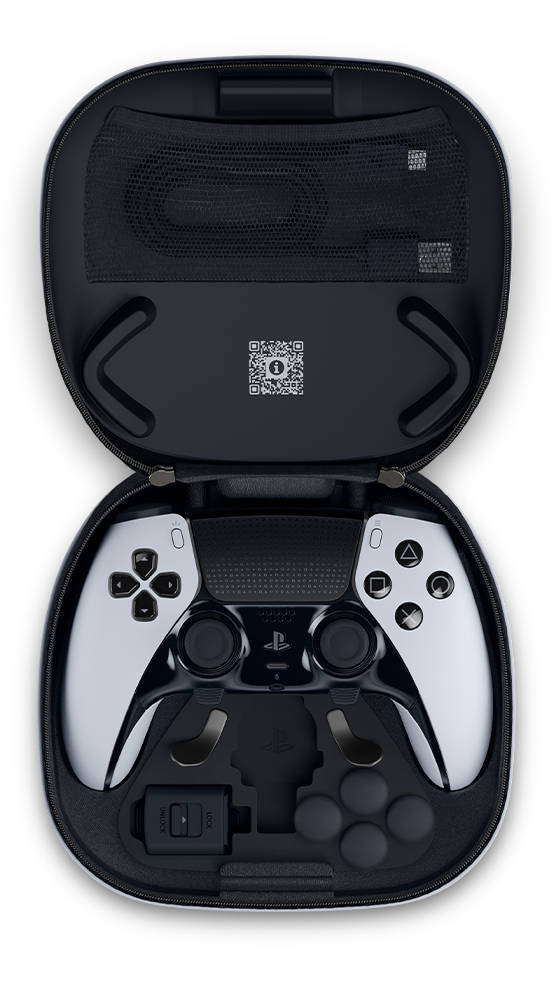The idea of making more capable versions of console controllers has existed for nearly as long as consoles themselves. However, on a first-party level, such devices were often born more out of necessity than desire in the early days. Sega replaced its original Genesis pad with a six-button model specifically to accommodate the arrival of Street Fighter II: Special Champion Edition, while Sony would go on to introduce the Dual Analog Controller—which added two analog sticks to the default PlayStation controller—as more complex 3D worlds were becoming the norm.
These days, “pro” controllers don’t exist to give us access to specific games, but instead to make playing the games we already own a more enjoyable or customized experience. While such devices used to be the territory of third-party hardware companies, that’s changed in recent years, most notably with Microsoft’s line of Elite Xbox controllers. Now, after having tested the waters with the DualShock 4 Back Button Attachment, Sony has finally entered the market with its own pro input device: the DualSense Edge.
After spending some time using the Edge, I’ve definitely got some thoughts on it, but there are two points I want to be clear on before we get to them. First, this isn’t a full-blown review for the controller, as I’ve only had it for just under a week now. While I have no reason at this moment to expect any major failings with the controller, we’ve seen numerous examples of other products show serious faults the longer they’ve been in the hands of players. And second, this is not going to be an extensive breakdown of the controller in every facet, because the Edge is essentially a DualSense with more features added to it. Unlike a third-party offering, where even the base quality of buttons and analog sticks are an unknown factor, anyone who has touched a standard DualSense will know what they’re getting with an Edge.

The Sticks
The DualSense Edge features two fully replaceable analog stick units that allow you to swap out their caps for one of three included options: standard-issue concave sticks, regular-height convex (or domed, or whatever the kids call them these days) sticks, or taller-profile convex sticks.
By far the biggest hardware feature of the Edge’s analog sticks—and of the controller overall—is that easy replaceability. Simply put, modern analog sticks are awful in terms of build quality and longevity, and that’s not a Sony-specific issue, but a far greater problem with the video game hardware industry as a whole. Having the ability to swap out the piece of your high-priced controller that is most likely to fail is a huge deal, and I genuinely appreciate that Sony made that a priority of the Edge.
At the same time, however, I also have to ask why the company didn’t just go all the way and either provide Hall effect analog sticks by default, or announce them as an option when ordering replacement parts. For those unfamiliar with the technology, Hall effect sticks use magnets for position tracking, which nearly eliminates the stick drift issues that can occur in units that instead rely on physical contact with sensors. Sega used Hall effect sticks in the Saturn 3D pad and standard Dreamcast controller, and they’ve come back in favor with recent third-party products created as solutions to the frustration over stick drift. Sure, maybe Sony wouldn’t be ready to put such analog sticks into the Edge by default, but I’d really like to see the company offer them as an upgrade option for a more permanent solution to the problem.
While I definitely appreciate being able to swap out the entire analog stick should I need to, quite possibly my favorite aspect of the DualSense Edge is its removable stick caps. Sure, I know, it’s a totally common feature with pro controllers, but getting said feature here means the return of something I’ve greatly missed: PlayStation convex analog sticks.
While I remain steadfast in saying that the DualShock 4 is Sony’s best controller to date, my heart will always belong to the DualShock 3 simply due to its sticks. I hated that Sony took them away when it came time for the DS4, and with both it and the DualSense, I’ve had to use third-party stick toppers to try to replicate the experience. Now, I can have the real deal on my DualSense Edge, and it’s glorious. Playing games on my PS5 now feels so much better than it did before, and I’m not sure I could ever go back to the standard concave sticks on the DualSense again.

The Buttons
On a surface level, the buttons on the DualSense Edge are exactly what you’d expect to find on a standard PlayStation 5 controller—except for two mysterious new buttons that I’ll get to in just a bit. Flip the device over, however, and its secrets are revealed.
A new set of switches sit near the L2 and R2 buttons, each offering three settings for how much push its respective button needs before activation. Having gotten more into pro controllers in recent years, I’ve come to really like setting my triggers to activate quicker for things like shooters, so while this certainly isn’t a new feature Sony has given us here, it’s one that’s always appreciated.
The other big advancement over the stock DualSense is the addition of back buttons, which can be set to duplicate any of the controller’s other inputs. Now, let’s address the elephant in the room right away: Yes, Sony has only given us two back buttons on the Edge, while other offerings like the Xbox Elite Series 2 feature four. I know that that decision will be a disappointment or even a deal breaker for some, and I can totally respect that opinion. For me, however, the trade-off to the lack of two additional inputs is that I have honestly never found a set of back buttons on a controller that worked as well for me as the ones on the DualSense Edge.
Initially, I set out using the lever-style back buttons, and I just wasn’t liking them at all. I’ve long had an issue with back buttons either being in a bad position, of a design that I didn’t find easy or comfortable to use, or both, and the lever attachments that Sony provides were falling into that latter category. Then, I switched to the weird “half dome” options that also come included with the Edge, and they were a literal game changer. For me, they are in the absolute perfect position, are incredibly easy to hit, and make using back buttons something that’s second nature for me, versus always having to dedicate some amount of brain power to remembering where the buttons are and how to properly press them.
In my time using the Edge, the back buttons have already helped me learn new things about games I never knew before. For example, I’ve always hated having sprint set to L3, so I set it to be on the left back button when playing games like Fortnite, which finally made running something I could use on a regular basis. And, in doing so, I found out that if you run at a door in the game, you’ll do a shoulder rush to bust it open—who knew!

The Software
As nice as its hardware additions and revisions are, the DualSense Edge’s best secret feature might actually be its integration with the PlayStation 5. Using the two new function buttons, you can quickly switch between four assigned profiles for the controller, or bring up a new screen to either modify existing profiles or add new ones.
Now, I know, a lot of pro controllers out there let you create custom profiles for the controller. At least on the console side, though, that’s typically all done without any sort of graphical interface on the system itself. When you give players a more straightforward and visual method for making those customization decisions, they’re inevitably going to get more use out of the feature and its possibilities. Plus, through the interface Sony has crafted, you can also set up button customizations that might not be possible otherwise. For example, one of the issues I’ve always had while playing Apex Legends is accidentally hitting R3 and meleeing when I didn’t intend to. Now, with the Edge, I can have R3 active on one of the back buttons, and then simply turn that function off for the analog stick.
And, not only is it incredibly easy to create profiles for specific games or genres, but you can put together a long list of profiles to have ready for when you need them. Need to suddenly put your Elden Ring setup back into the rotation after not using it for a year? It’ll be there waiting, and you can swap it into your main profiles list in a matter of seconds.
The true power of the software side of the DualSense Edge goes far beyond swapping buttons around, however. For every profile you create, you can then adjust things like analog stick sensitivity and deadzone, trigger deadzone, vibration intensity, and trigger effect intensity. The adjustments you can make to the sticks and triggers can get pretty complex, to the point of making each of those input methods feel very different from the norm (such as making the analog sticks emulate digital controls). This is the area of the DualSense Edge that I currently have the least experience with, given these adjustments really need a lot of fine-tuning to use properly, and because the changes can be so game-specific. Still, it’s another way in which I think the controller shows how much more powerful it can be due to its tight integration with the PS5.

The Battery
While I’ve avoided reading the opinions of others on the DualSense Edge before I’d written up my own, it’s been impossible for me to avoid seeing comments on the biggest complaint about the controller: its battery life.
Now, I’m a bit of an odd duck when it comes to batteries in the modern era. I hate having built-in rechargeable batteries, as they’re hard to replace when they die (as happened to my favorite DualShock 3), and can cause issues if not removed when left unused for long periods of time (see: a long list of handhelds). Battery-wise, my favorite controller is the standard Xbox option, as I can swap in a fresh pair of Eneloops in a matter of seconds and get back to my game.

That said, yes, the DualSense Edge seems to offer up less battery life than the standard DualSense, which itself was already shorter than many hoped for—but honestly, I find it hard to personally care. As someone who owns the official Sony charging stand, the Edge will always be on it whenever I’m not using the controller, and I’m at a point in life where none of my gaming sessions will ever last for an extended amount of hours anyhow. (And if they do, I’ve never had a problem with going wired for a while.) In testing the controller, I had one period of playing that lasted just under six hours, and my Edge still had battery life left once I finished.
Like the conversation about the number of back buttons the controller features, I completely understand if the DualSense Edge having a lower expected battery life than the standard DualSense completely kills your interest in it. At the same time, don’t let the comments of others make you instantly assume that the controller would be a no-go for you as well. Think about how you use your standard DualShock, what your recharging routine typically is, and then decide if it might or might not work for your personal style of gaming.
In Conclusion
With its more pro-level features, built-in option for replacing the analog sticks should they go bad, robust software integration, and admittedly nice carrying care, Sony’s DualSense Edge has proven to be a great—but not perfect—controller for all of my PlayStation-focused gaming needs. Just for its optional convex analog stick caps and fantastic back buttons alone, I’m not sure I’ll ever be able to go back to the standard DualSense at this point.
However, to be fair, I say that having received my DualSense Edge from Sony for the purposes of this article. At $200 here in the States, this is not a cheap controller, and is unquestionably a luxury item for those who are able to afford it. While I think Sony could definitely have made the controller better for that price, it’s also one of the best-feeling and most usable pro controllers of the different models that I’ve used.
At that point, I have to ask which I find more important: the controller I’d pay less for, or the one I’d actually use?

Mollie got her start in games media via the crazy world of gaming fanzines, and now works at EGM with the goal of covering all of the weird Japanese and niche releases that nobody else on staff cares about. She’s active in the gaming community on a personal level, and an outspoken voice on topics such as equality in gaming, consumer rights, and good UI. Check her out on Bluesky and Mastodon.